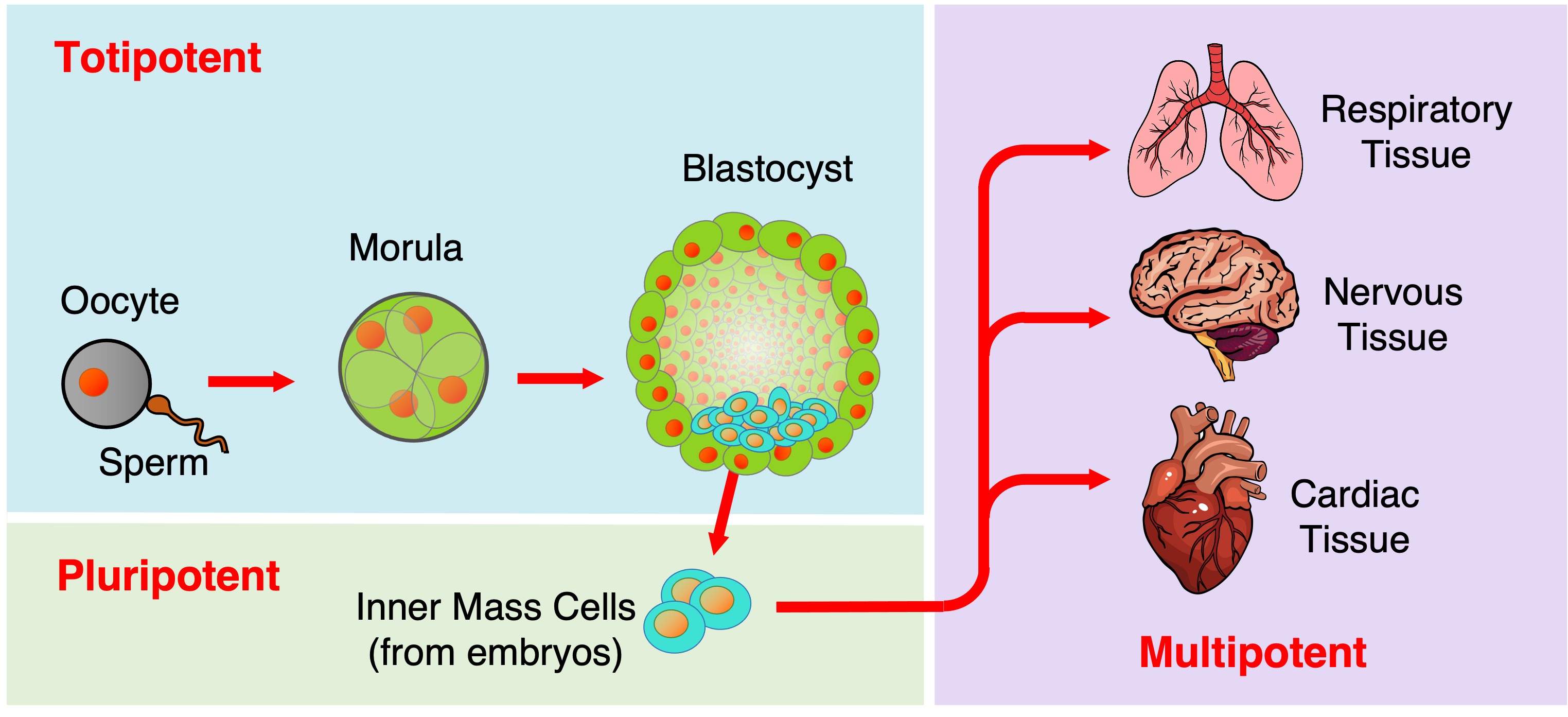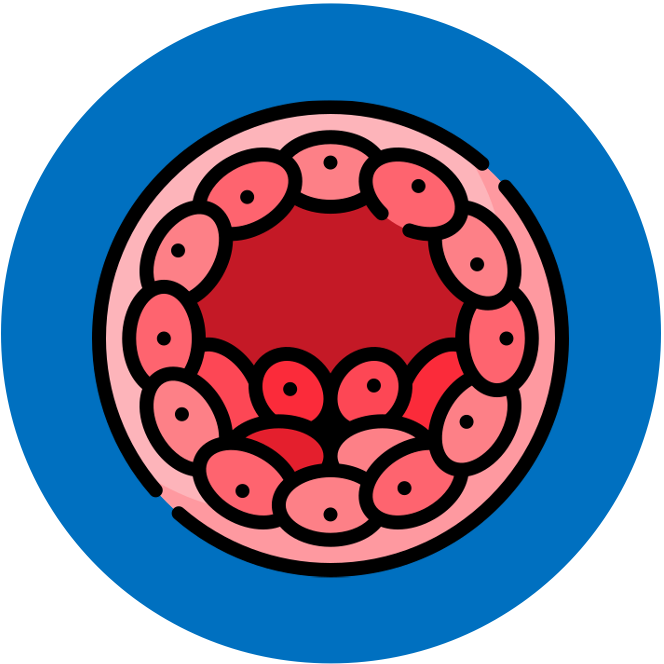

Stem Cells
Stem cells are unspecialised cells that have two key qualities:
-
Self renewal – They can continually divide and replicate
-
Potency – They have the capacity to differentiate into specific cell types
When a cell differentiates to become specialised, it loses its capacity to form alternative cell types (meaning stem cell supplies are typically limited)
Types of Stem Cells
There are three main types of stem cells present at various stages of human development:
-
Totipotent – Can form any cell type and develop into entirely new organisms
-
Pluripotent – Can form any cell type arising from the three germ layers
-
Multipotent – Can only form a number of closely related cell types
Totipotent stem cells (e.g. zygotes) and pluripotent stem cells (inner cell mass of blastocyst) are considered to be embryonic stem cells, while multipotent stem cells (e.g. bone marrow) are considered to be adult stem cells
Stem Cell Overview


Embryonic and adult stem cells can be used therapeutically to treat diseases by replacing damaged cells with healthy ones
-
Embryonic stem cells have a greater potency (can treat more conditions) but there are ethical issues associated with their use (involves the generation and destruction on an embryo)
-
Adult stem cells have less ethical issues and a lower chance of graft rejection (involves use of patient’s own cells), but have lower potency and are therefore limited in their potential use
The potency of adult stem cells can be increased by triggering the expression of specific genes via nuclear reprogramming, but these induced pluripotent stem cells are both difficult and expensive to create
Adult Stem Cells
Stem cell niches are sites within the body where a pool of adult stem cells are maintained in preparation for future proliferation and differentiation
-
Locations of stem cell niches in the human body include the bone marrow, hair follicles, heart, intestines and brain
Bone Marrow
-
Haemopoietic stem cells are located within the bone marrow and give rise to the different types of blood cells (e.g. erythrocytes, leucocytes and thrombocytes)
-
Bone marrow transplants are commonly employed to replace the haemopoietic stem cell niche following chemotherapy for leukemia (blood cell cancer)
Hair Follicles
-
The hair follicles contain a range of epidermal stem cells that are involved in cyclic bouts of hair growth, skin innervation, vascularisation and wound repair
-
These stem cells could potentially be harvested and used to regenerate skin tissue in burns victims (or stimulated to promote hair regrowth in bald individuals)




